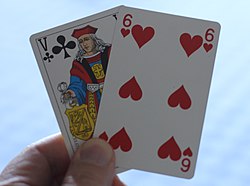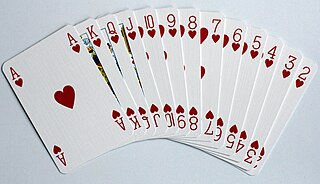
Hearts is an "evasion-type" trick-taking playing card game for four players, although most variations can accommodate between three and six players. It was first recorded in America in the 1880s and has many variants, some of which are also referred to as "Hearts", especially the games of Black Lady and Black Maria. The game is a member of the Whist group of trick-taking games, but is unusual among Whist variants in that it is a trick-avoidance game; players avoid winning certain penalty cards in tricks, usually by avoiding winning tricks altogether. The original game of Hearts is still current, but has been overtaken in popularity by Black Lady in the United States and Black Maria in Great Britain.

Polignac is a French 18th century trick-taking card game ancestral to Hearts and Black Maria. It is played by 3-6 players with a 32-card deck. It is sometimes played as a party game with the 52-card pack; however, it is better as a serious game for four, playing all against all. Other names for this game include Quatre Valets and Stay Away. Knaves is a variant and it is also similar to the Austrian and German games, Slobberhannes, Eichelobern and Grasobern.
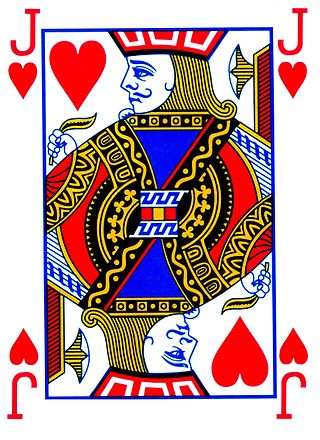
Reversis, or more rarely, Réversi, is a very old trick-taking card game of the Hearts group whose origin is supposed to be Italian, transformed into Spain and then in France. It is considered one of the two probable ancestors of Hearts, Black Lady and Black Maria, the other being Coquimbert or Coquinbert. It was very popular with the French aristocracy in the 17th and 18th centuries, and much played elsewhere, except in Britain. Initially quite simple, the game eventually developed into an elaborate affair involving vast quantities of counters and a complex system of pools and side-payments. Its name may have possibly come from the reverse order and construction of the game itself, or even from its exceptional slam which, like "shooting the moon" in Black Lady, reverses the entire aim of the game.

The following is a glossary of terms used in card games. Besides the terms listed here, there are thousands of common and uncommon slang terms. Terms in this glossary should not be game-specific, but apply to a wide range of card games. For glossaries that relate primarily to one game or family of similar games, see Game-specific glossaries.
Jeu Royal de la Guerre is a French novelty card game for two to twelve players that was described in La Maison des Jeux Academiques in 1659. It is a trick-taking game played with a dedicated war-themed 40-card pack based on the French-suited 36-card piquet pack. The suits are irrelevant for gameplay, and to a large extent the game is determined by four suitless special cards.

Belle, Flux et Trente-et-Un, is an historical, gambling, card game that was widespread in France and Germany during the 17th and 18th centuries. As a relative of Brag and Poch, from which the game of Poker developed, it is of cultural-historical interest.

Twenty-one, formerly known as vingt-un in Britain, France and America, is the name given to a family of popular card games of the gambling family, the progenitor of which is recorded in Spain in the early 17th century. The family includes the casino games of blackjack and pontoon as well as their domestic equivalents. Twenty-one rose to prominence in France in the 18th century and spread from there to Germany and Britain from whence it crossed to America. Known initially as vingt-un in all those countries, it developed into pontoon in Britain after the First World War and blackjack in Canada and the United States in the late 19th century, where the legalisation of gambling increased its popularity.

Mouche, also known as Lanterlu, is an old, French, trick-taking card game for two to six players which has elements, such as bluffing, reminiscent of the much later game of poker. It is a member of the Rams family of games and, although it is a gambling game, often played for small stakes, it is also suitable as a party game or as a family game with children from the age of 12 upwards. It is named after the mouche, a term that variously refers to its winning hand, the basic stake and the penalty for failing to take any tricks. Although also called Bête, it should not be confused with the older game of that name from which it came and which, in turn, was a derivative of Triomphe.
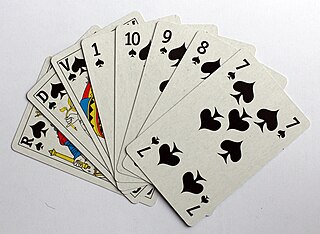
Bête, la Bête, Beste or la Beste, originally known as Homme or l'Homme, was an old, French, trick-taking card game, usually for three to five players. It was a derivative of Triomphe created by introducing the concept of bidding. Its earlier name gives away its descent from the 16th-century Spanish game of Ombre. It is the "earliest recorded multi-player version of Triomphe".

The game of Nain Jaune or Yellow Dwarf, also formerly called Lindor, is an "attractive and unique traditional French card game" using a board comprising five compartments or boxes. It is a reasoned game of chance because it combines the hazards of card distribution with the strategy of building suits. Nain Jaune, which is considered a classic French game, is named after the seven of diamonds, which is depicted as a yellow dwarf in the centre of the game board.
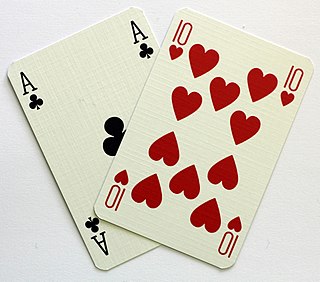
Pontoon, formerly called Vingt-Un, is a card game of the banking family for three to ten players and the "British domestic version of Twenty-One," a game first recorded in 17th-century Spain, but which spread to France, Germany and Britain in the late 18th century, and America during the early 19th century. It is neither a variant of nor derived from Blackjack. Both are descended from the early British version of Vingt-Un. In Britain, it first became known as Pontoon during the First World War, the name apparently being a soldier's corruption of its former French name. The game has no official rules and varies widely from place to place. It is a popular family game, but also widely played by children, students, and members of the armed forces. In 1981, Pontoon was the third most popular card game in Britain after Rummy and Whist. It has been described as "an amusing round game and one which anyone can learn in a few minutes."

Culbas or Cul-bas is an historical French card game of the fishing type for three to eight players that dates to at least the 17th century. It is described as being "very old" and having "a great simplicity in which chance plays the biggest role."

Gé, Point, Flux et Sequence, also called Les Quatre Jeux is an historical, French gambling, card game of the 17th and early 18th centuries.
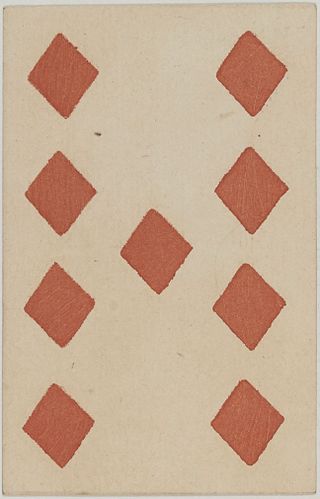
Comet is a very old, French card game of the Stops family for 2 to 5 players that is still played today. It was originally called Manille, but acquired a new name on the appearance of Halley's Comet in 1682. It is not related to the modern trick-taking game also called Manille. The American game of Commit is an evolution of Comet.

Quarante de Roi or Quarante de Rois is an historical French, point-trick, card game for four players in partnerships of two. The name comes from its highest scoring combination of four Kings which is worth 40 points.
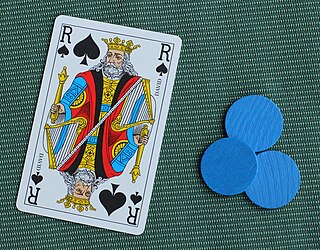
Tontine is an historical French gambling game for five to twelve players using playing cards. It is a social game of pure chance in which the chips (jetons) circulate between the players and the pool until one player wins all the chips in play.

Hoc Mazarin, also just Hoc, is an historical French gambling game of the Stops family for two or three players. The game was popular at the court of Versailles in the 17th century and was named after Cardinal Mazarin, chief minister to the King of France.

Emprunt is an historical French card game of the Hoc family for three to six players that dates to at least the early 18th century.
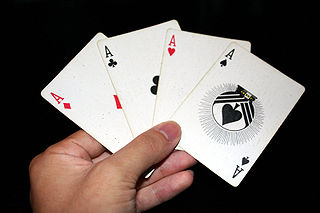
Romestecq is an historical Dutch card game for two, four or six players in two teams that dates to at least the 17th century. It was also popular in France for over a century. Despite being criticised in contemporary sources as "complicated" it continued to appear in the literature until the end of the 19th century and was sufficiently interesting for it to appear in The Penguin Book of Card Games in 2008.

Papillon is an old French card game of the fishing type for three or four players. It has been described as "perfect for children who know how to count".
